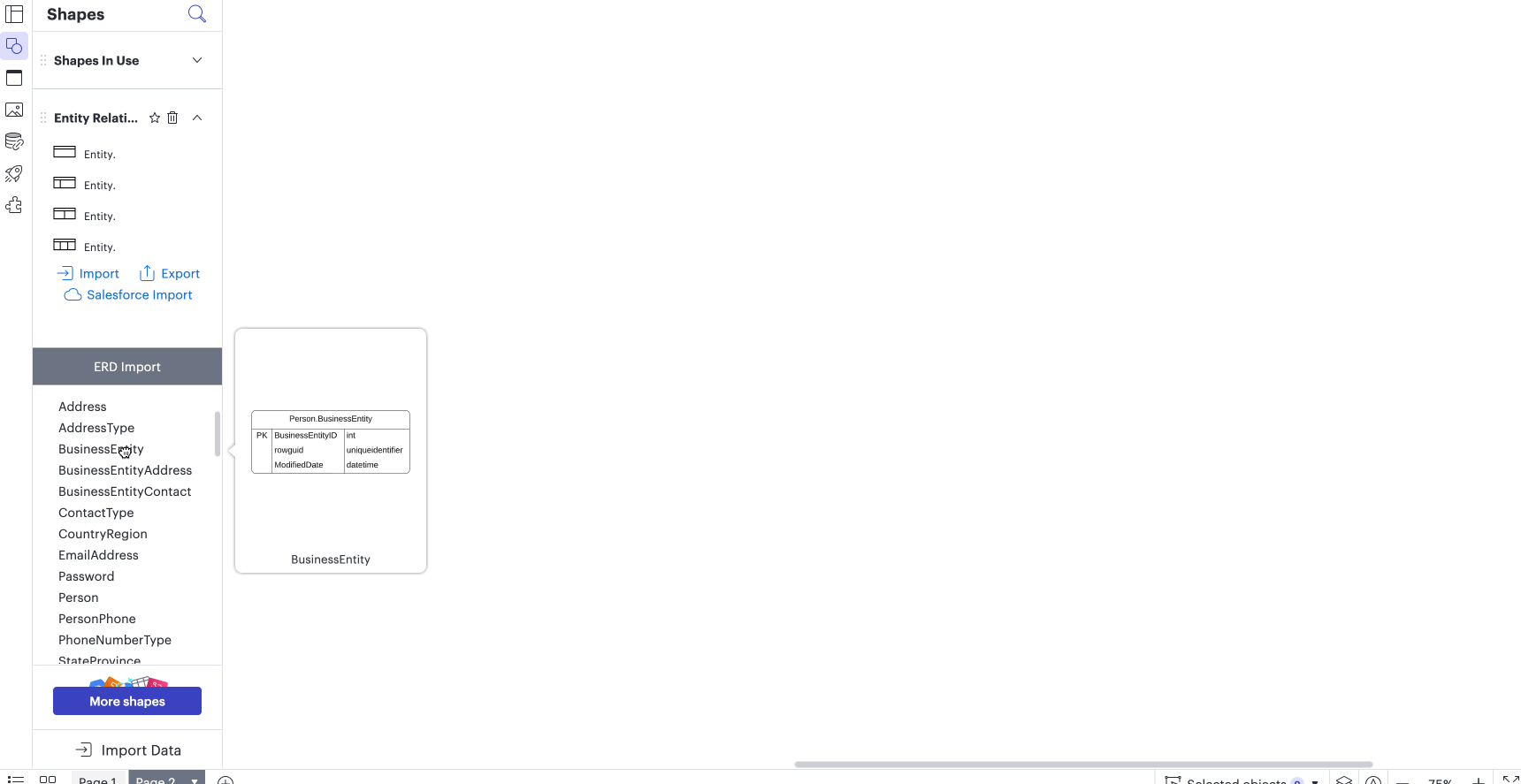Well designed and thoroughly documented databases are crucial in helping software engineers build and maintain efficient, scalable and adaptable applications, and entity relationship diagrams are an established way to do this. With Lucidchart, you have both the flexibility to manually build an ERD from scratch using our Entity Relationship shape library and the convenience of importing database entities and relationships straight from your DBMS.
With our ERD import tool, you can run a query in your DBMS to generate a list of databases, tables and schemas to import straight into your Shape menu. Drag entities from the Shape menu onto the canvas to map out your database. Relationship lines are conveniently added automatically between entities wherever relationships are indicated in the list.

Once built, your imported ERD can be kept up-to-date by updating the diagram with a new database file. You also have the option to export your ERD directly from Lucidchart in SQL format for upload to your DBMS, or JSON format for upload in Quickbase.
Do you have any questions, tips or ideas on how to approach database modeling with ERDs? Leave a comment below to share your thoughts!

